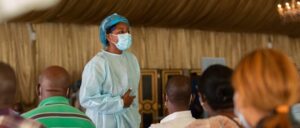
When astronauts return from the International Space Station (ISS), many experience an unexpected side effect: altered eyesight. This phenomenon affects approximately 70% of astronauts on long-duration missions, prompting NASA scientists to investigate how weightlessness impacts vision.
Dr. Sarah Johnson first noticed this during her six-month stay aboard the ISS. She reported that text, once crystal clear before launch, became blurry. Johnson is not alone; astronauts frequently report difficulty reading, blurred distance vision, and other visual changes that can persist for years after returning to Earth.
Understanding Spaceflight Associated Neuro-ocular Syndrome
The condition, now known as Spaceflight Associated Neuro-ocular Syndrome (SANS), has emerged as one of the most pressing health concerns for long-duration space missions. Unlike motion sickness or muscle weakness, which resolve quickly upon returning to Earth, the vision changes associated with SANS can be permanent.
The primary suspect is microgravity. On Earth, gravity constantly pulls fluids downward through our bodies. In space, these fluids redistribute, causing facial puffiness and increased pressure inside the skull. This elevated pressure can flatten the back of the eyeball and cause swelling of the optic nerve. These findings have significant implications for Mars missions, which could last two to three years.
“We need to understand whether these changes stabilize or continue worsening over time. An astronaut with severely compromised vision could jeopardize an entire Mars mission.” – Dr. Michael Roberts, NASA’s vision research lead.
Developing Countermeasures for Space-Induced Vision Changes
Dr. Michael Roberts and his team at NASA are developing several countermeasures, including special contact lenses, medications to reduce fluid pressure, and exercise protocols that might help maintain normal circulation. They are also testing a device called the Visual Impairment Intracranial Pressure (VIIP) chamber, which could simulate Earth-like pressure conditions for the eyes.
Meanwhile, the Japan Aerospace Exploration Agency (JAXA) is contributing to this research. Astronaut Satoshi Furukawa, for instance, utilizes the upgraded Cycle Ergometer with Vibration Isolation and Stabilization (CEVIS) system to maintain muscle and bone density levels during spaceflight.
Implications for Earth and Future Space Missions
While concerning, this research has potential benefits for people on Earth as well. Scientists are gaining new insights into how pressure affects vision, which could help treat conditions like glaucoma and intracranial hypertension. Understanding how our bodies adapt to space remains crucial.
As we push the boundaries of human capability through longer-duration space flights, we continue to uncover new challenges. The research into solutions will persist at NASA and aboard the ISS, ensuring that when humanity finally embarks on a mission to Mars, we will be able to see clearly what we have accomplished.
The announcement comes as space agencies worldwide are preparing for more ambitious missions, including potential human expeditions to Mars. The move represents a significant step in ensuring astronaut safety and mission success in the face of the unknown challenges posed by extended space travel.







